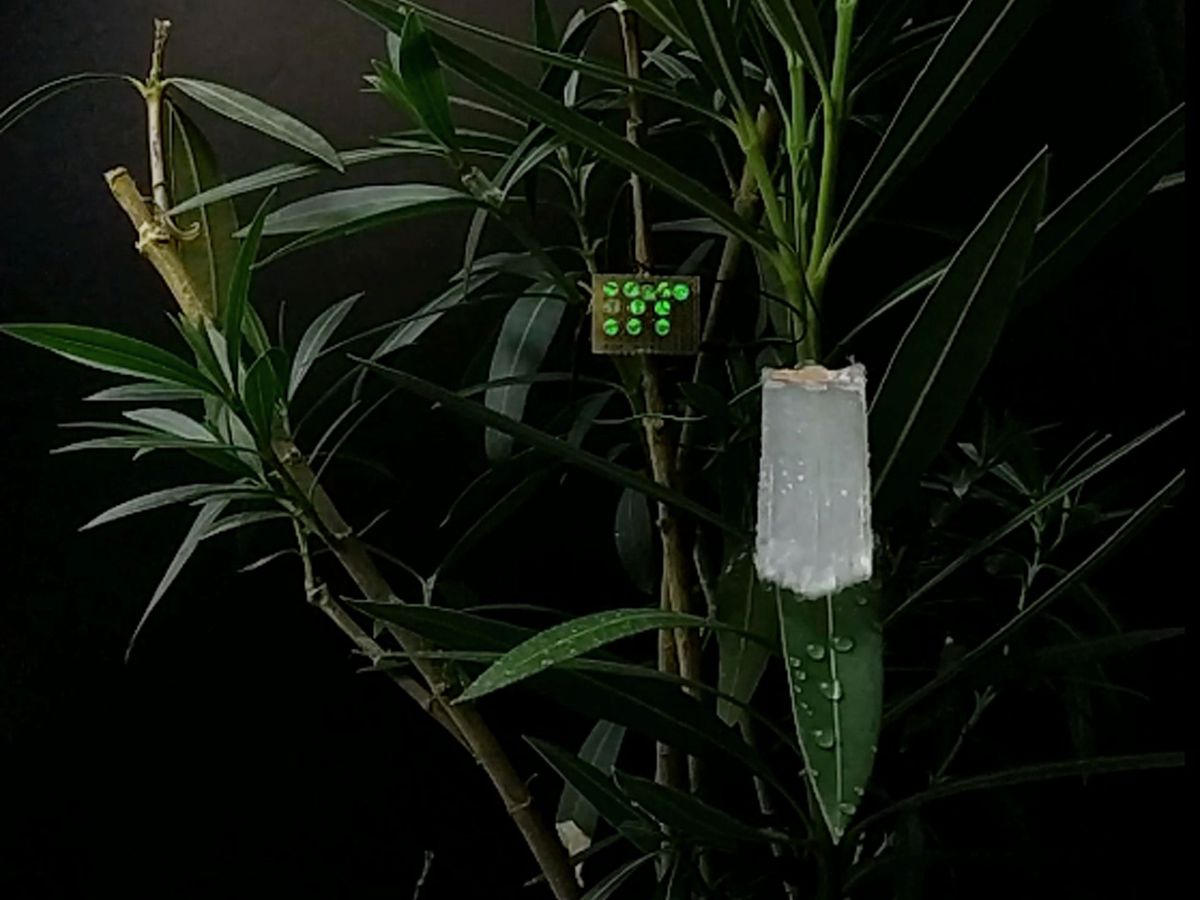This article is part of our exclusive IEEE Journal Watch series in partnership with IEEE Xplore.
When it comes to harvesting energy from water or wind, the first thought that comes to mind is likely a massive hydro dam or wind farm. But think smaller.
Researchers in Italy have developed an energy-harvesting system that can be embedded within plants and creates electricity from raindrops or wind. Under rainy or windy conditions, the device can create enough electricity to light up LED lights and power itself. The new device is described in a study published 28 February in IEEE Robotics and Automation Letters.
Fabian Meder is a researcher studying bioinspired soft robotics at the Italian Institute of Technology (IIT), in Genoa, Italy. He notes that a system relying on leaves to produce energy could be especially useful for agricultural applications and remote environmental monitoring, where self-powered sensors are needed to observe plant health or monitor climate conditions.
The device created by Meder and his colleagues involves an artificial leaf that has a silicone elastomer layer along the bottom and is added among the leaves of a real plant. “When the [leaves] move in the wind, the two surfaces touch each other and separate again, creating static charges on the plant leaf cuticle and on our device,” explains Meder. “These charges are induced into the inner cellular tissue of the plant, where they create a current. We can harvest this current by an electrode inserted into the plant tissue.”
Several existing energy harvesters embedded within plants use a similar technique to create electricity from wind, but this research group took their work one step further, enabling their device to also harvest energy from raindrops.
Whereas the silicone elastomer layer sits along the bottom of the artificial leaf to generate and harvest static charges from the rustling of the leaves, the artificial leaf has a different, fluorinated ethylene propylene (FEP) layer on its top side. When raindrops fall on this top layer, they charge the surface and connect the electrodes embedded within and on top of the artificial leaf, creating a capacitor. As the raindrops shrink and spread over the leaf’s surface, the capacitive coupling between the electrodes changes, producing a current.
Artificial leaf creates electricity from raindrops and windyoutu.be
In their study, the researchers embedded their artificial leaf system within the leaves of a living oleander plant, and assessed its ability to harvest energy with varying amounts of rainfall and wind. They found that single water drops create voltage and current peaks of over 40 volts and 15 microamperes, and can directly power 11 LED lights.
“The results revealed that wind and rain energy harvesting are possible with the device—either separately or simultaneously—making it a multifunctional energy harvester or self-powered sensor,” says Barbara Mazzolai, associate director for robotics and director of the IIT’s Bioinspired Soft Robotics Laboratory, who was also involved in the study.
She notes that existing energy-harvesting systems like this that rely on wind energy alone tend to produce less electricity when their surfaces become wet. The researchers report, however, that their new device can actually create more electricity in wet conditions, via its top FEP layer for harvesting energy from raindrops.
Based on the results of this study, the researchers believe the performance of their artificial leaf can likely be further improved through design modifications—such as to the shapes of the electrodes and the materials, for example.
“We have filed a patent application on the technology and are analyzing the potential markets,” says Mazzolai. “Still, some research is necessary before defining the final product—for example, we want to test the systems in detail under outdoor and strongly varying wind and rain conditions.”
- Floating Artificial Leaf Turns CO2 Into Fuel ›
- Artificial Leaf Is 10 Times Better at Generating Hydrogen from Sunlight ›
- Energy Harvesting for Wearable Technology Steps Up - IEEE Spectrum ›
Michelle Hampson is a freelance writer based in Halifax. She frequently contributes to Spectrum's Journal Watch coverage, which highlights newsworthy studies published in IEEE journals.



